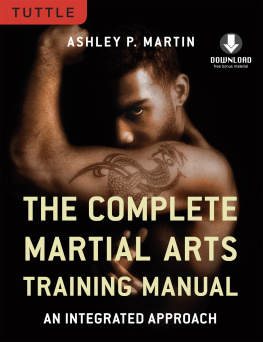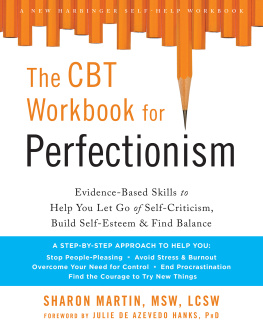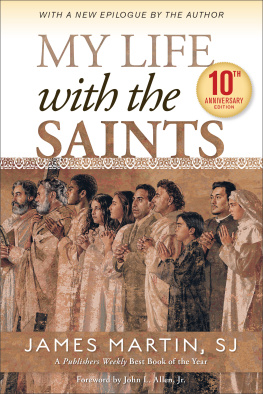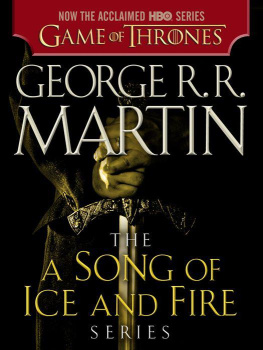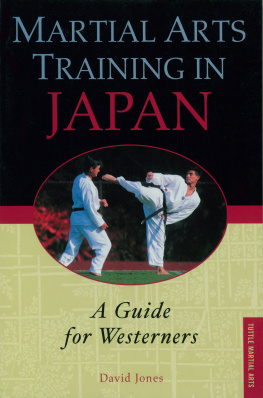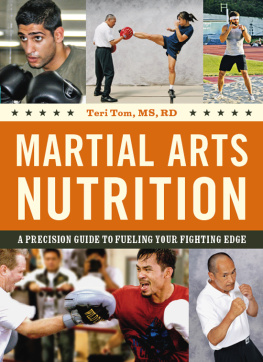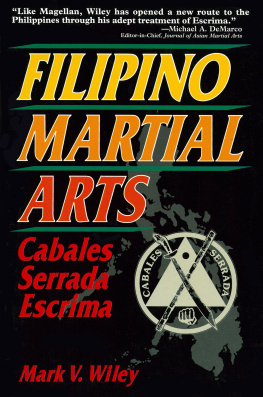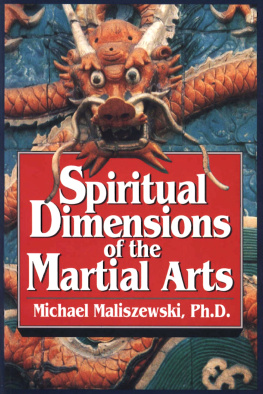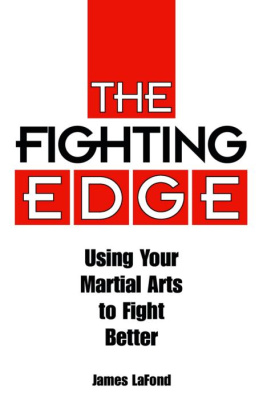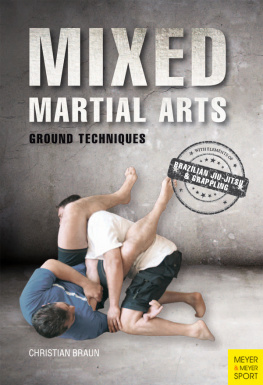Acknowledgements
I would like to thank the following people
for their help in creating this book:
Nita Martin for extensive help researching and editing
James Bailey and Carlos Martos for taking part in the photo shoot
Andrew Kuc for taking part in shooting the
Ashley P. Martin
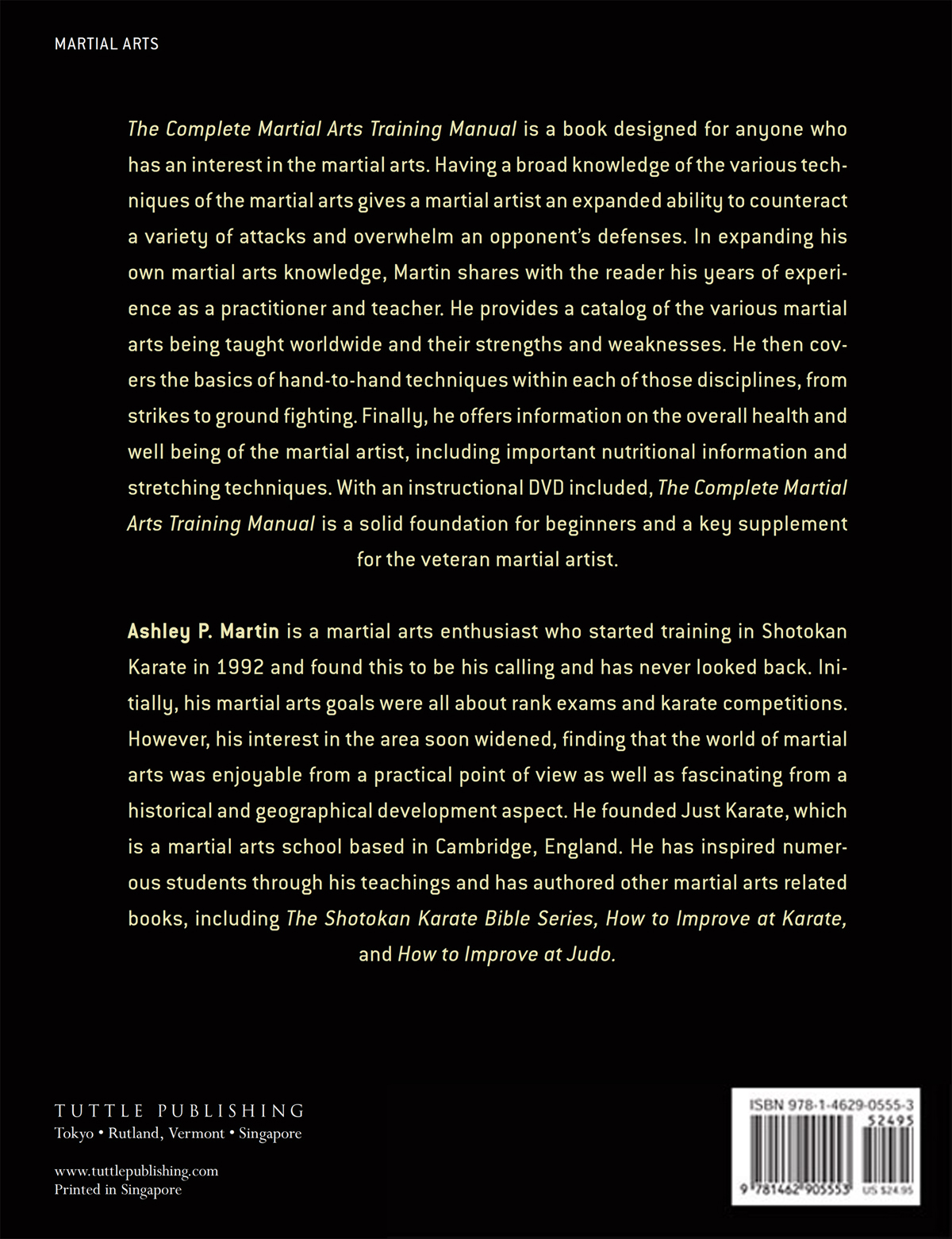
Bibliography
Alexander, David, Aikido and Competition, www.dragon-tsunami.org/Dtimes/Pages/articlei.htm.
Bean, Anita, Sports Nutrition (Complete Guide to), A & C Black, 2000
Bucksam Kong, Eugene H. Ho, Hung Gar Kung-Fu, Black Belt Communications, 1973.
Butcher, Alex, Judo The Essential Guide to Mastering the Art, New Holland Publishers, 2008.
Cosser, Sandy, Can Tainted Taekwondo Overcome Its Sordid Past?, http://ezinearticles.com
Haines, Bruce A., Karate's History and Traditions, Tuttle Publishing, 1995.
Harnsey, Kevin, Taekwondo, Connections Book Publishing, 2002.
Hart, Christopher S., A History of Intercollegiate Boxing, www.studentorg.umd.edu, 2005.
Hackerott, Tony, Modern Olympic Taekwondo, http://ezinearticles.com
International Federation of Associated Wrestling Styles, International Wrestling Rules, 2006
Joy, C. Peter, The Strange and Terrible History of Varsity Boxing, http://cuabc.org/.,
Kano, Jigaro, Kodokan Judo, Kodansha International, 1994.
Karter, Karon and Mezger, Guy, The Complete Idiot's Guide to Kickboxing, Alpha Books, 2000.
Kimura, Masahiko, My Judo, translation at www.judoinfo.com/kimura2.htm, 1985.
Lindholm, David and Svard, Peter, Knightly Arts of Combat - Sigmund Ringecks Sword and Buckler Fighting, Wrestling, and Fighting in Armor, Paladin Press, 2006.
Martin, Ashley P., The Shotokan Karate Bible - Beginner to Black Belt, A & C Black, 2007.
Martin, Ashley P., The Advanced Shotokan Karate Bible - Black Belt and Beyond, A & C Black, 2008.
Martin, N. A., Yoga for Flexibility, Balance and Strength, Crowood Press, 2009.
Norris, C. M., The Complete Guide to Stretching, A & C Black, 1999.
Ohlenkamp, Neil, Black Belt Judo Skills and Techniques, New Holland Publishers, 2006.
Serge, Mol, Classical Fighting Arts of Japan: A Complete Guide to Koryu Jujutsu, Kodansha International, 2001.
Sieh, Ron, Martial Arts for Beginner, Writers and Readers Publishing, 1995.
Twigger, Robert, Angry White Pyjamas, Harper Paperbacks, 1997.
Walter, Donald F., Mixed Martial Arts: Ultimate Sport, or Ultimately Illegal?, www.grapplearts.com/ Mixed-Martial-Arts-1.htm, 2003.
It is wonderful. It truly is. It is the only thing that is real! It's you against me, it's challenging another guy's manhood. With gloves. Words cannot describe that feelingof being a man, of being a gladiator, of being a warrior. It's irreplaceable.
~ Sugar Ray Leonard
CHAPTER ONE
The Way of the Warrior
The most common perception of a martial art is that of an oriental fighting system: throwing punches and flying kicks. Of course, systems of fighting are not restricted to the East. Boxing, wrestling, and fencing are just some of the martial arts that are common in Europe.
Martial arts can be broadly categorized into three main types: striking, grappling, and weapons arts. This simple classification makes it easier to get a handle on the diverse range of martial arts that exist. Although the original objective of the martial arts was to train individuals how to fight, this is no longer the only reason that people take up training. There are many other benefits to such training. For example, you may just be interested in finding out about exotic training traditions and history, you may be attracted to the health and fitness benefits, or you may indeed be looking to become a competitor.
Some find an alternative categorization system useful in tackling this subject. Internal and external, similar to soft and hard, classes can be used give a different kind of sense about the system. This is primarily a philosophical classification that comes from traditional Chinese martial arts, with an external system being outwardly physical in its nature with big blocks and attacks; and an internal system taking a more subtle approach through fluid movements.
Inevitably, most martial arts contain some sort of sparring. The original aim of sparring practice was to help to train people to fight. However, the false nature of set piece sparring, and sparring with restrictions in competitions can give you a false sense of your ability to defend yourself in a real life situations where there are no rules. That is not to say that sparring doesn't have an important place in any training system. Indeed, taking part in competitive sparring is always overall more realistic than any training method that uses a collaborating partner, no matter how well intentioned the methodology.
Focusing on a single martial art is certainly the way to start your training. However, if your objective is to be a well-rounded fighter, then looking at what the other martial arts have to offer will form an important part of your training. This has led to the emergence of mixed martial arts (MMA) where techniques from many martial arts can be used. This type of training has led to well-rounded, more complete martial artists.
What is a Martial Art?
A martial art is a codified system of fighting. Many martial arts teach you how to fight with a weapon, others are concerned with unarmed fighting. Some martial arts are intended for use against multiple assailants, while others have been designed to duel against a single skilled opponent. Martial arts have one object in commonto gain an advantage in combat through the development of superior fighting skill.
Many people think of martial arts as being primarily a phenomenon unique to the Far East but, in fact, every culture has its own inherited martial tradition. The ancient Greek Olympic games (776 BC-393 AD) included boxing and wrestling events. From 648 BC, they also included an event that was called paukration, which literally means "all powers," reflecting the fact that competitors could use almost any attack that they wanted. The only techniques that were not allowed were eye gouges and bites, so competitors would use a combination of boxing and wrestling moves in addition to kicking techniques.
Historically, martial training was focused on weapon based martial arts because of their use on the battlefield. For example, in Japan, the samurai would fight primarily with the long sword, using kenjutsu, but for those times when they could not use a sword, they had an unarmed fighting art called jujutsu. Similarly, in Europe, many fencing books were produced between the 15th and 17th century. The long sword was held in the highest regard but a number of combat forms were taught alongside swordsmanship including stick fighting, armored combat, mounted combat, and unarmed grappling, as well as the use of various weapons, such as daggers and pole arms.
It was only after the Renaissance that martial arts in Europe started to divide into different fields: civilian dueling (self-defense), most commonly with the rapier; sporting activity such as boxing, wrestling, or stick fighting; and military training which evolved with the military thinking of the timeduring the 19th century this would have consisted of bayonet, saber, and the lance.
By the 20th century, martial arts had begun to be taught in schools and universities. In Japan, judo and karate found their way into the public school system and it was in the Universities of Tokyo that these martial arts evolved into sporting activities. In the West, boxing and wrestling became increasingly accepted as sports. For example, the Universities of Oxford and Cambridge have had an official annual boxing match since 1896 and, in the United States, boxing was introduced in the 1920s both for its recreational value and for physical conditioning, leading to intercollegiate boxing leagues. Wrestling has been an intercollegiate sport in the United States since 1900 and this soon spread to wrestling tournaments for high school students.
Next page
